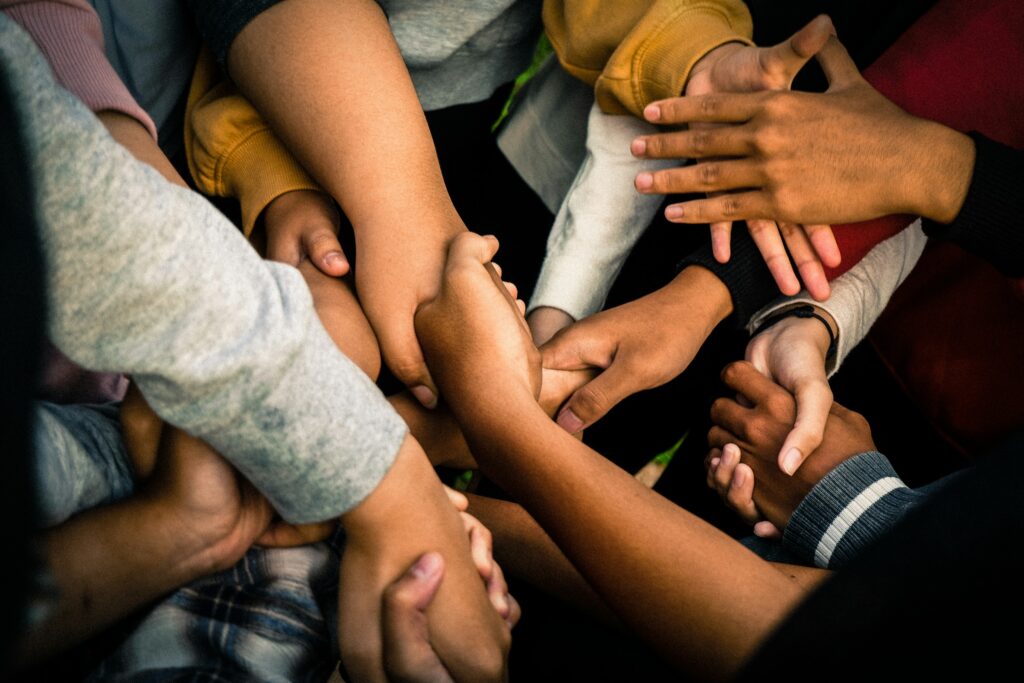By Beth Dennison
We often think about PTSD as something that happens inside an individual — a set of symptoms that linger for six months or more after a traumatic event. We talk about their healing, their trauma, their nervous system.
But trauma and healing don’t exist in isolation. They live in our relationships and our communities. The truth is: PTSD always involves a failure of the tribe.
What does that mean? The initial trauma may or may not have been relational. Abuse by a family member, for instance, is directly relational. A car accident or an earthquake usually isn’t.
Yet, if, six months later our nervous system is still showing the effects of trauma — if we remain haunted, numb, reactive, or disconnected — that means our people, our community, didn’t know how to help us heal. The nervous system is still stuck because the social system failed to bring us back into safety and connection. That’s the failure of the tribe.
Why Western Culture Struggles to Heal Together
In modern Western culture, especially in the U.S., we are remarkably poor at helping each other through pain. We don’t know how to sit with distress, or how to support each other through fear, grief, and shame. We live in a culture of toxic positivity (pretending everything’s fine), rugged individualism (believing we should “handle it ourselves), and heroic solitude (glorifying those who survive alone).
Add to that the numbing tools we normalize — alcohol, overwork, endless scrolling — and it’s easy to see why trauma festers instead of heals. We’re taught that showing weakness is shameful, and that needing others is a failure. But it’s precisely this isolation that fuels PTSD.
Healing requires connection. Relational Wounds Need Relational Medicine
Self-regulation — the ability to settle yourself and digest intense and overwhelming experiences— is important. But some experiences are simply too big to heal alone. Humans evolved to live in tribes. Our sense of self, safety, and even reality is organized through relationships. When our connections are disrupted or unsafe, our entire nervous system can feel disoriented. That’s why trauma recovery depends as much on who is around us as on what happened to us.
Two Traumas: The Event and the Failure of the Tribe
Whenever there is PTSD, there are really two traumas:
- The original event — the car crash, the assault, the developmental trauma, the betrayal, the loss, the war experiences.
- The failure of the tribe — when those around us don’t notice, don’t respond, or don’t know how to help, when people suffer alone.
That second trauma is always relational. When we learn that no one will come for us, that our pain will be ignored or minimized, we stop reaching out. We go flat, we withdraw, we stop expecting help.
Towards Healing Together
When our tribe fails, it’s usually not because people don’t care. It’s because they don’t know how to help. The skills for helping each other recover are both cultural and relational.
These skills are learned through modeling, passed down through generations in families and in communities that know how to hold space for pain without shame.
To heal trauma, we have to deepen our capacity for healthy relationships. That means:
- Reclaiming co-regulation skills
- Building communities where vulnerability is met with care.
- Creating systems that support connection and offer antidotes to shame.
The rise in stress-related illnesses, anxiety, and social fragmentation isn’t random. It reflects a culture that has lost its relational intelligence. Our collective task — as therapists, clients, and communities — is to rebuild it.
Healing trauma is not just personal work.
It is collective work too.
